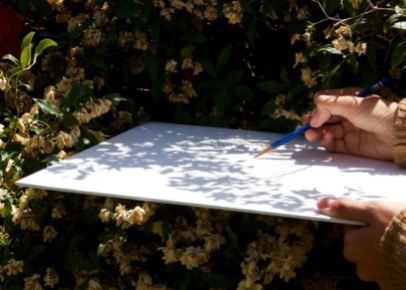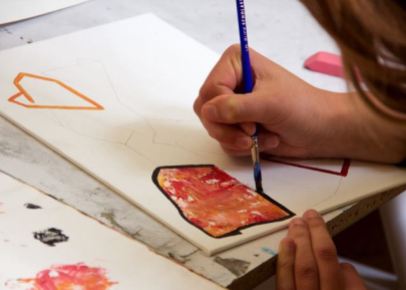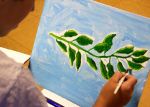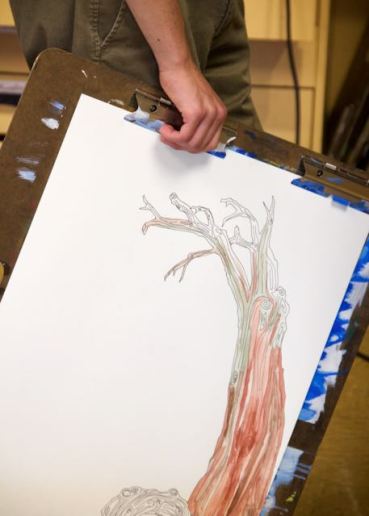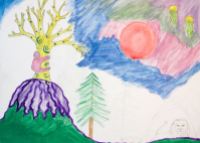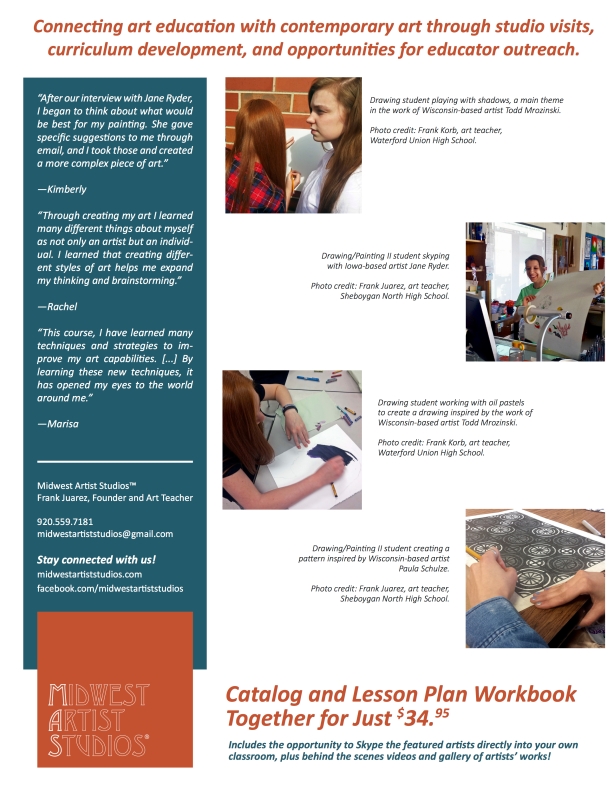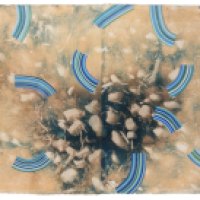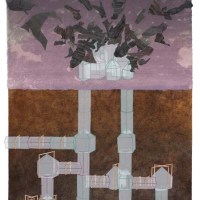I am extremely excited to be heading into Year 2 of the 3 year project, the Midwest Artist Studios™ (MAS) Project. I will be traveling from July 26 through August 1, 2015 to the following artists/cities/states – Mellissa Redman, Grand Rapids, Michigan; Kate Robertson, Ann Arbor, Michigan; Jenniffer Omaitz, Kent, Ohio; Ellie Honl, Bloomington, Indiana; Jessica Anderson, Jacksonville, Illinois; and Jason Ackman, Rushville, Illinois. In mid-August I will be visiting the John Michael Kohler Arts Center’s Arts/Industry to document Emmy Lingscheit, who is one of our featured 2015 MAS artists and a current artist in resident. In late September, I will finish our documentation/research by visiting Krista Svalbonas, Chicago, Illinois and Emmy Lingscheit, Urbana, Illinois.
The artists selected were based on their responses to an online survey focusing on Art Education, body of work, and a Skype interview.
Throughout our visits I will be introducing you to 8 amazing and talented artists from the Midwest working in printmaking to painting, sculpture to mixed media and collage to installation art.
Click here to read a collaborative reflection from this past school year’s MAS Project.
Join me on this MAS adventure via facebook.com/midwestartiststudios or subscribe to the blog, midwestartiststudios.com.
– Frank Juarez
________________________________________________________________________
Here are two of the questions asked on our survey and the artist’s response.
Please share one positive Art Education experience that you had in middle school, high school or college.
I interned for the West Michigan Center for Arts and Technology from 2013-14 and during that time I saw young teens who were not particularly interested in being in yet another program, let alone an arts program become truly excited about community projects they were involved in. The defining factor for the success of WMCAT is not the facilities or the glamour of the studios, but the genuine interest of the instructors and the hands on approach they have toward their students. These kids were what the school system would have considered not worth the time, but I found them really charming and attentive once given the right amounts of attention and motivation to see a project to it’s completion.
Why is Art Education today?
Art education impacted my decision to pursue art as a career. I was homeschooled from fifth grade until I entered college, but I attended school through fourth grade. The art classes I was involved in helped me to hold on to my creativity through very difficult family circumstances that would have otherwise extinguished my interest in the arts. Once I was homeschooled, my mother recognized that I was artistically inclined she put me in summer programs which fostered education through the arts.
Mellissa Redman
Web: mellissajredman.smoothfolio.com

The precursor to her current body of work was her father’s cancer diagnosis in May of 2011. She took this into her artwork as a way to record her feelings at the time, and it slowly evolved into a series of work on its own. The creative process turned from an escape to a cathartic experience. Coping with life is part of our existence as humans. It is an emotional process, affecting each individual differently. The concept of “masking” the true self is something that is well known by nearly every human being. In many ways, it can be described as an elaborate act, a play of sorts; in others, a survival tactic that maintains order and control. She believes both examples of these methods of coping can have positive outcomes.
The portraits in these pieces are not meant to represent any specific person or people group, rather humanity as a whole. Therefore, the expressions of the faces of these figures are neither threatening nor inviting. They are to be viewed as pensive and introverted; facing the viewer, yet clearly not acknowledging him/her for his or her own thoughts. The patterns she uses throughout the picture plane look may appear to be familiar to a viewer, but only in the way that they simply mimic the human fingerprint or loop/whorl pattern in which human hair grows. In addition to the patterning, she alters the smooth surface of the pieces with resin drips and pouring. Additionally, the patterning represents the complexities within oneself as anxieties multiply and are internalized. When light passes through the translucent screen-printed patterns, the portrait in the layers beneath the resin is interrupted. She begins with washes of watercolor that she builds up to increase color saturation. Over this, she uses colored pencil to flesh out the figure’s skin tone and facial details. The only other part of the body shown in this series is the neck, which she has made uniform in each individual piece to create homogeneity.
Once the portrait is completed, she screen prints a transparent thumbprint pattern directly onto the piece and cover the surface with a coating of clear epoxy resin. More transparent screen-printed patterns are printed in between layers of the resin, before the piece is completed. All of the pieces contain at least three layers of resin to achieve the correct amount of layering. The rest of the body is unimportant to this work as the focus is on the head. Behind the head of the figure is a colored disc. Although in art history, a flat disc behind the head of a figure was regarded as a holy symbol, its additional function is to represent a person’s aura (her reasoning for including it is the latter definition). She has modified the aura to act both as a compositional element to frame the face and head, and also to obscure it. Her goal with this series of work is to make the hidden external, to depict how swallowed fears and anxieties would appear if made tangible and visible. Though it’s well known that there are plenty of destructive, unhealthy, and dangerous coping strategies associated with emotional turmoil, she tends to think that there are an equal amount of positive experiences that can be gathered. It is these experiences that give us growth of character, a will to live. These are the experiences she hopes to convey in her work.
Bio
Mellissa Redman earned her Bachelor’s Degree in Painting and Drawing from the University of Akron. A native of Akron, Ohio, Mellissa volunteered her time or artwork to the local YMCA and YWCA chapters, the University of Akron Ballet Institute, the City of Akron, The Chapel: Akron Campus, and the Akron Children’s Hospital. She now resides in Grand Rapids, Michigan where she recently received a Master’s Degree of Fine Art in Painting at the Kendall College of Art and Design. Though she works with water-based media, her paintings also include drawing, printing and collage.
Gallery

Untitled, Grid, Colored pencil, watercolor, hot glue, serigraphy, and resin on board Dimensions Vary upon orientation and installation space 2014
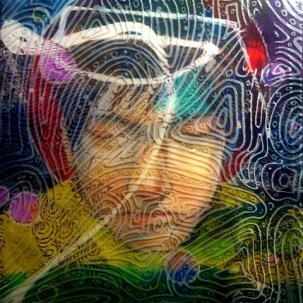
Dreamlike State, Colored pencil, watercolor, serigraphy, and resin on board 6 inches by 6 inches 2014

Self Inflicted Womb (12), Colored pencil, watercolor, hot glue, white glue, serigraphy, and resin on board 8 inches by 8 inches 2015

Drown (left), Colored pencil, watercolor, serigraphy, and resin on board 5 inches by 20 inches

One, Two, Three, Four, Colored pencil, watercolor, hot glue, serigraphy, and resin on board 8 inches by 8 inches 2014
All images copyright of the artist and used with their permission.



 Opening June 2017, Larry will have a solo exhibition, So You Think You Know. It will be an immersive installation comprised of hundreds of small collages. He has explored the concepts of perception, deception, invisibility and camouflage, both visually and metaphorically, for over 20 years. For the Nerman Museum’s Kansas Focus Gallery, he has constructed intimate collages employing traditional means like painting, drawing, and printmaking combined with the more contemporary medium of digitally generated images – each work a response to the barrage of information which engulfs us daily.
Opening June 2017, Larry will have a solo exhibition, So You Think You Know. It will be an immersive installation comprised of hundreds of small collages. He has explored the concepts of perception, deception, invisibility and camouflage, both visually and metaphorically, for over 20 years. For the Nerman Museum’s Kansas Focus Gallery, he has constructed intimate collages employing traditional means like painting, drawing, and printmaking combined with the more contemporary medium of digitally generated images – each work a response to the barrage of information which engulfs us daily. 










